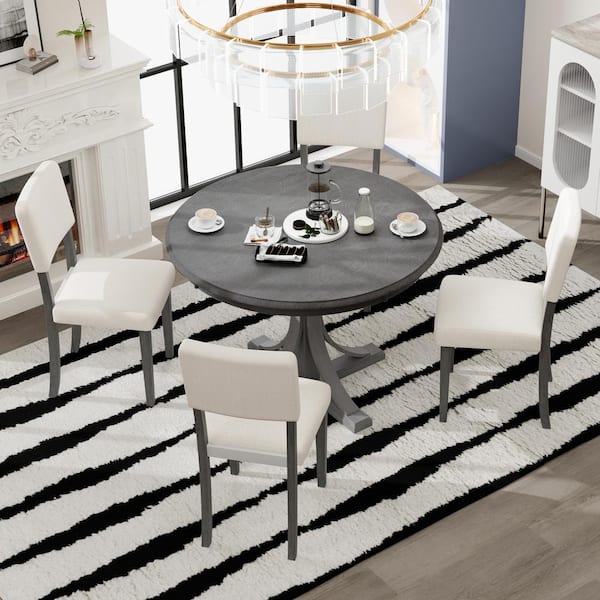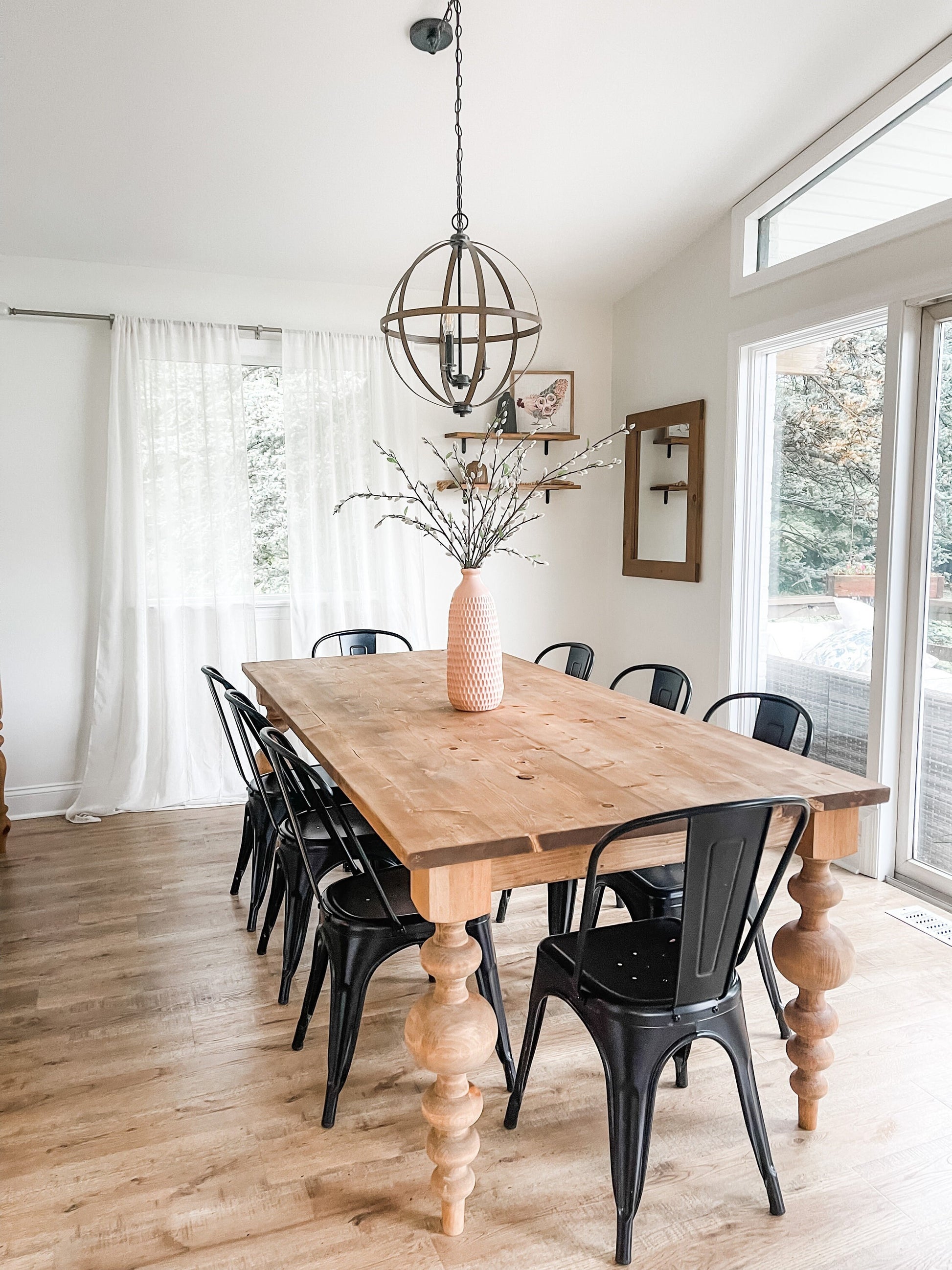Creative Ideas for Replacing or Refurbishing Your Dining Room Table Legs
Creative Ideas for Replacing or Refurbishing Your Dining Room Table Legs
Blog Article
Professional Tips for Installing Dining-room Table Legs for Optimum Security
When it comes to setting up dining space table legs, attaining maximum stability is extremely important for both capability and aesthetic appeals. What specific methods can improve security even better?
Pick the Right Legs
When selecting the proper legs for your dining-room table, it is important to think about both performance and appearances. The legs you select will significantly affect the total layout and stability of the table. First, review the table's planned use; if you anticipate frequent gatherings, stronger legs, such as those made from strong wood or metal, may be preferable, as they offer boosted sturdiness and assistance.
Standard dining tables usually vary from 28 to 30 inches in height, so guarantee the legs line up with this criterion for convenience. Tapered legs can include a contemporary touch, while transformed legs could convey a more timeless visual.

Select Appropriate Hardware
Just how can the right equipment enhance the security and longevity of your dining-room table? The option of ideal equipment is essential to guaranteeing that the legs of your table are securely connected and able to endure normal use. High-grade screws, bolts, and braces offer the essential strength to sustain the weight of the table, along with any kind of added lots positioned upon it during dishes or gatherings.
When choosing screws, go with those made from durable products such as stainless steel or brass, which stand up to corrosion and maintain stability gradually. The length of the screws is equally important; they must penetrate deeply into the table's framework without compromising stability. For bolted links, consider making use of lock washing machines to stop loosening as a result of vibration or motion.
Furthermore, making use of edge brackets can include additional support, particularly for larger tables or those with larger tops. These braces distribute weight evenly and help preserve the table's shape. Making certain that the equipment you select is proper for the particular materials of your table will additionally improve its overall stability and longevity, allowing you to enjoy your dining experience for many years to come.
Ensure Appropriate Positioning
Correct alignment of eating area table legs is necessary for both aesthetic appeal and useful security. To attain optimal placement, start by gauging the distance from the table's edges to the leg attachment points.
Use a level throughout installation to verify that each leg is perpendicular to the tabletop. This action is important, as even small inconsistencies can escalate right into considerable stability problems gradually. It is recommended to mark the wanted leg positions on the underside of the table with a pencil or concealing tape before safeguarding them. This practice works as a visual overview, permitting adjustments as needed.
Moreover, double-check the positioning after the preliminary screws are tightened, as adjustments may be needed prior to completely securing the hardware. By prioritizing proper alignment, you not just enhance the table's overall design but likewise make certain that it continues to be secure and useful for many years ahead.

Think About Weight Distribution
After guaranteeing correct placement of the eating space table legs, it is very important to take into consideration weight circulation to improve stability and capability. dining room table legs. read Appropriate weight distribution is essential in preventing making certain and tottering that the table can support its intended tons without threat of tipping or breaking down
When positioning the legs, guarantee they are placed at equivalent distances from the facility of the table to uniformly disperse the weight across the structure. Take into consideration the weight of the tabletop and any type of items that will regularly rest on it, such as attractive pieces or tabletop devices. Tables with larger surfaces must preferably have legs positioned closer to the edges, as this takes full advantage of the base of support and great post to read lessens the risk of instability.
In addition, if the table is intended for usage in a high-traffic location, take into consideration using larger materials for the legs or adding maintaining elements, such as cross-bracing or a reduced rack - dining room table legs. These adjustments can help keep equilibrium and stop moving throughout usage. Eventually, a well-considered weight circulation approach will dramatically enhance the table's general efficiency, guaranteeing it remains a attractive and practical focal point for your eating room
Test Stability Prior To Use
Examining the security of the dining-room table before usage is an important step that ought to not be forgotten. Ensuring that the table is stable and secure can stop crashes and prolong the lifespan of the furniture. Begin my sources by applying gentle pressure to various factors on the table surface area. Lower on the facility and afterwards along the sides, shifting or observing any kind of wobbling. If the table shows instability, identify the legs or joints that may call for change.
Following, examine that all screws and bolts are tightened up effectively. Loosened connections can lead to instability and prospective damage with time. If essential, utilize timber adhesive on joints to improve stability, ensuring to enable ample drying out time.

Conclusion
In verdict, the setup of eating room table legs needs mindful consideration of products, weight, equipment, and placement circulation to achieve optimum stability. By picking top quality fasteners and tough legs, ensuring accurate positioning, and dispersing weight uniformly, the structural stability of the table can be dramatically enhanced. Conducting a security test prior to regular use even more ensures that the table will endure everyday pressures, thus giving a safe and dependable dining experience.
When it comes to setting up dining space table legs, accomplishing maximum security is paramount for both functionality and visual appeals. The legs you choose will considerably impact the overall design and security of the table (dining room table legs). Typical eating tables commonly range from 28 to 30 inches in elevation, so make sure the legs line up with this requirement for comfort.Appropriate alignment of dining area table legs is important for both visual allure and practical stability.In conclusion, the installment of eating space table legs calls for cautious consideration of products, hardware, alignment, and weight circulation to accomplish optimum stability
Report this page